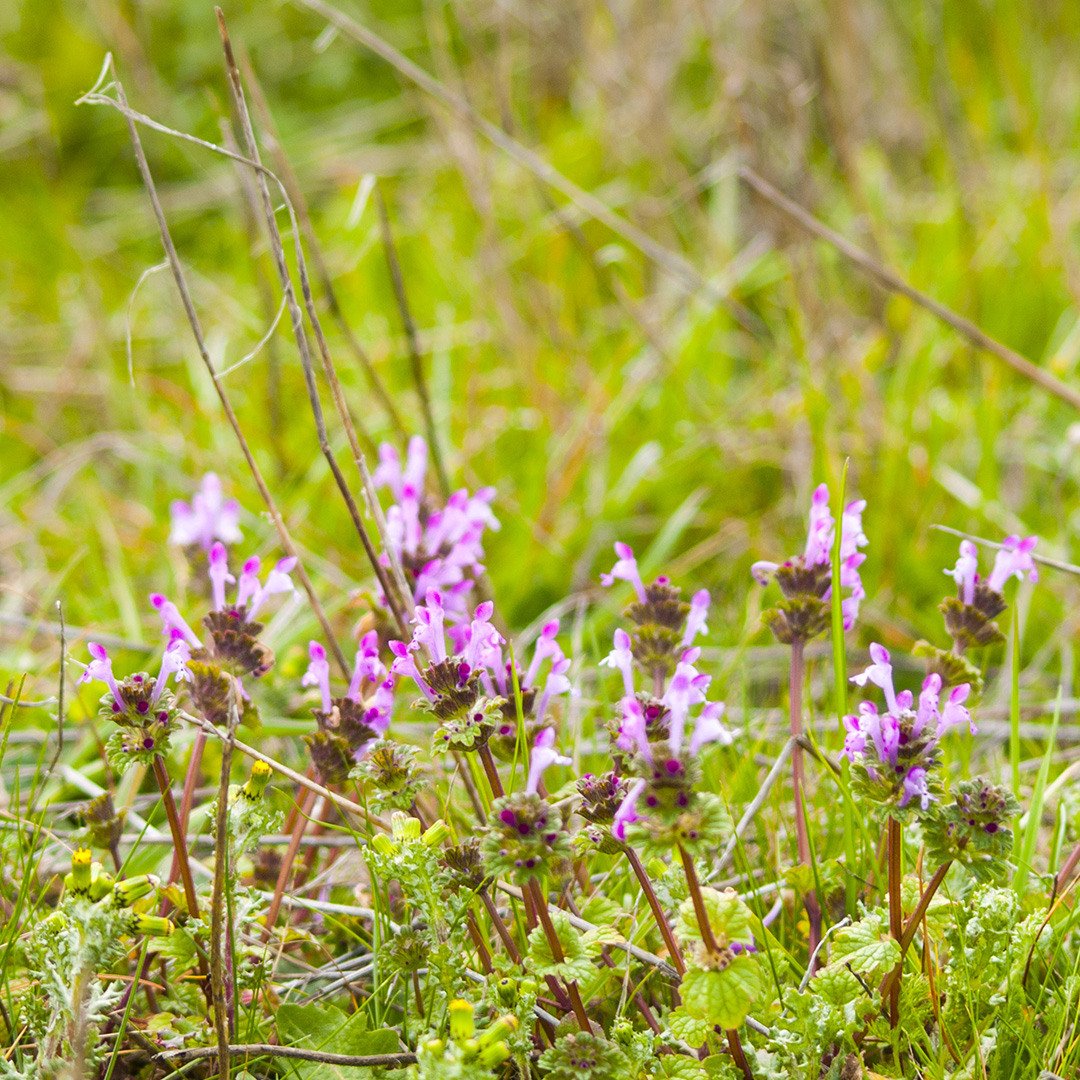

Apply an appropriate pre-emergent herbicide prior to seed germination or apply an appropriate post-emergent herbicide directly to target weeds. Like other mints, purple deadnettle is an aggressive grower that spreads like wildfire anywhere it can get a foothold.Hand-pull plants in planting beds prior to seed maturation.seedlings do not germinate during hot summer temperatures purple deadnettle plants complete their life cycle before hot temperatures set in and seeds can germinate immediately as long as temperatures are not too high.

a winter annual with seeds that germinate in the fall although a lesser portion of seeds may also germinate in the spring.

commonly grows in planting beds and lawn areas. Production of the weed happens in spring, making it a winter annual. The upper part has purplish-pink flowers and leaves with petioles. Purple deadnettle is identified by its square stems, hairy foliage (deep purple/plum top leaves, fading to green towards the base of the stem) and pink flowers. As the photograph shows, this winter annual features bright. The square stem is divided into upper and lower sections. Purple deadnettle (Lamium purpureum) is no stranger to pasturelands, roadsides, lawns, and gardens. While these plant species die as annuals, their seeds remain safely buried and will germinate the following spring. This vigorous, fast-growing perennial produces purple, pink, or white flowers and can form a thick ground cover. The difference is henbit has mostly green leaves, with purple flowers. The purple dead nettle is a hardy plant that blooms in the spring. Visually, it closely resembles the Henbit. The only lookalike that this plant has is henbit. flowers are small, purple and circle upper leaf axils if studied carefully, flowers resemble tiny orchid blooms with a white face and purple spots Purple Deadnettle (Lamium Purpureum) Purple Deadnettle is also another weed plant from the mint family. leaves are clustered around stem tips and the uppermost leaves are smaller and reddish purple in color, giving the plant the appearance of vertically standing hooded figures. Risk: Grow in areas where soil has been disturbed, like. While there are many types, these purple weeds can be hardy and aggressive, growing in your lawn and taking over your garden area. Type: Weeds, members of the mint family Appearance: Both have square stems and two-lipped flowers. leaves are hairy, arrow shaped and oppositely arranged on stems leaves have prominent veins that are recessed on blades and leaf margins are toothed The most common purple flower weeds are the henbit, wild violets, creeping charlie, forget-me-nots, purple dead nettle, black nightshade, creeping thistle, musk thistle and bull thistle. produces square-shaped stems that grow 4 – 16 inches tall stems are branched at the base and purplish in color.







 0 kommentar(er)
0 kommentar(er)
